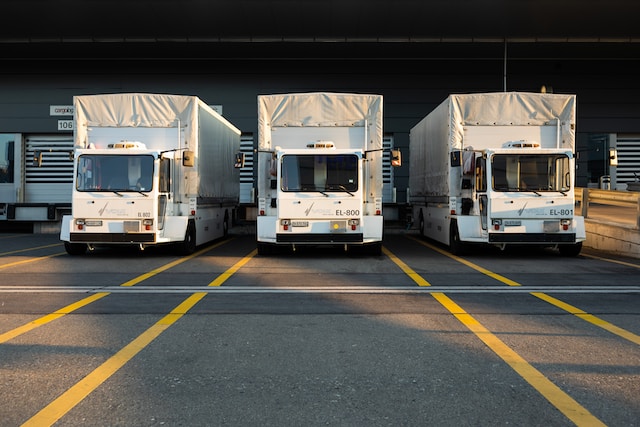Fuel is one of the largest expenses for a fleet business. The good news is that companies have various options to reduce their fuel expenses. Implementing a well-written and enforced policy can help reduce fuel costs. You can also use apps that provide drivers with information about the best gas prices in their areas.
Restrict Idling
Idling is a major drain on many fleet budgets. It burns up to 1.5 gallons per hour and can waste a truck’s engine hours, which decreases mileage. Restricting idling will save your company fuel costs, help protect the environment, and reduce wear on fleet vehicles. Ensure your drivers are aware of the importance of reducing their idling habits. Another strategy to reduce fuel consumption is implementing an efficient work schedule that reduces commute time and eliminates the need for multiple trips. You could also use telematics to help identify unauthorized fuel purchases and discourage theft by limiting the number of gallons purchased. Idling is not only a fuel waste but also causes engine wear and contributes to greenhouse gas emissions. In addition, it can cause expensive mechanical damage to vehicles. Over one million long-haul heavy-duty trucks idle during required rest stops, wasting over a billion gallons of fuel yearly. Consider investing in route optimization tools and fleet management software to reduce idling time. These solutions allow you to receive alerts when a vehicle idles for a certain time, exceeds a speed limit, or enters or exits a geofence. You can then encourage drivers to make small behavioral adjustments on fuel purchases, saving the company money on fuel and maintenance costs.
Refine Your Routing
Route optimization software can help your company reduce fuel consumption and costs by enabling drivers to visit each customer quickly with the most efficient routes possible. It helps reduce waste, boost productivity, and improve operations management. Wasted fuel comes from more than just extra miles on the road; it includes unnecessary idling. Some route optimization strategies seek to prevent excessive idling by eliminating routes that require a driver to stop at every intersection. Shaving even half an hour off a delivery route can result in massive yearly fuel savings. It translates into real money that can be used to pay for more fuel or other fleet expenses.
Look for the Cheapest Gas Stations
The cost of gas can eat up an already-sized chunk of a small business budget. Using a mobile app to find cheaper gas stations can save your company money. You can also try other apps to help you snag the best gas prices. However, these navigation apps usually require you to share your location with trusted partners, so use them only if you’re comfortable doing so.
Refrain from Overfilling the Tank
Whether your company’s vehicles use gas cards or employees are reimbursed with a car allowance, fuel is among the highest costs for fleets. While your business can’t control the cost of fuel, there are ways to reduce your fleet’s consumption. Keeping an eye on the tank can help drivers avoid overfilling it. Overflowing gasoline can damage engine components and create a fire hazard. It can also pollute the environment and seep into groundwater resources.
Additionally, overfilling the tank can affect your vehicle’s fuel economy. Drivers should fill their tanks only to the recommended level, usually about halfway down. It helps drivers avoid paying for unnecessary gas and improves their vehicle’s performance.
Consider Diesel Vehicles
Modern diesel engines run much more cleanly than their gasoline counterparts. It means your drivers can save on fuel costs and reduce their impact on global warming emissions by driving these vehicles. If drivers are driving long stretches of highway, a diesel vehicle can help them get up to 20 to 30% more miles per gallon than a gas-powered vehicle. It will allow them to make fewer stops and extend their driving time.
Switch to On-site Fueling
With on-site fueling, drivers don’t have to go out of their way to find a gas station. They can have their fleet vehicles delivered directly to the job site. It eliminates the time spent on fuel runs and cuts down on maintenance costs, mileage, and billable hours wasted at the gas station. On-site refuelling can help you save money by eliminating the need for costly fuel storage tanks and the extra liability that comes with them. You can purchase wholesale bulk fuel with on-site fueling and lock in lower rates. It gives you more control over fuel costs, even during volatile market fluctuations. It is particularly helpful for construction companies.
Park Your Vehicles in the Shade
Car parking shade structures can shield fleet vehicles from various elements, such as sun radiation, harmful UV rays, rain, hail, and wind. This shielding can preserve vehicle paint and reduce the need for frequent cleaning, waxing, and other maintenance. A shade structure can limit fuel evaporation from the tank, which can help extend the reach of the vehicle’s gas supply. It can save on both time and fuel costs as drivers won’t have to drive as far to return to their car to fill up. The shade can also keep the interior temperature cooler, decreasing the need for air conditioning that uses additional energy and wastes fuel.




